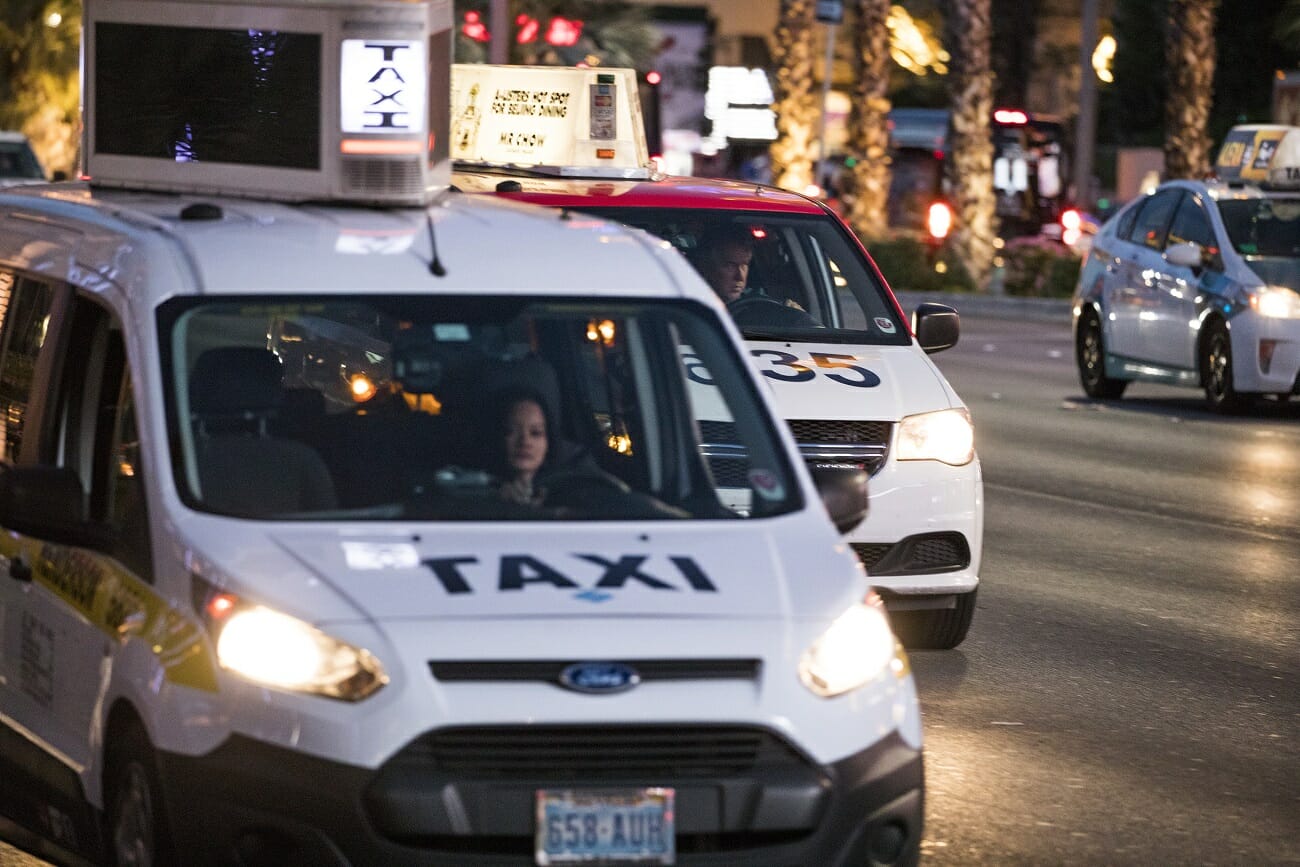Additional cuts coming to taxicab authority, amid ride decline blamed on pandemic, ride-sharing apps

Between the proliferation of ride-hailing apps such as Uber and Lyft and the COVID-19 pandemic, taxicab rides in Clark County have gone from a precipitous decline to falling off a cliff.
Steep declines in taxicab rides — annual double digit decreases over the last six years, culminating with a 62 percent revenue drop in the 2021 fiscal year — spells bad news for the state’s largely fee-funded Taxicab Authority, which oversees and regulates the industry in Clark County (taxi operations in other counties are overseen by the Nevada Transportation Authority).
During a budget closing meeting on Thursday evening, lawmakers preliminarily approved axing two vacant positions (a dispatcher and vehicle inspector) and transferring out a vacant IT position to help the authority stay financially viable through the upcoming budget cycle — though the Taxicab Authority warned legislative budget staff that “further reductions in their operating expenditures in the form of personnel cuts would impact the agency’s ability to perform the three primary public safety functions of permitting, vehicle inspection and enforcement.”
The proposed cuts and transfers of positions comes after state lawmakers in 2019 approved eliminating 15 positions in the agency, and raising the annual assessment charged on individual taxi cabs from $100 to $300 a year — all part of an effort to shore up the agency’s worsening financial status. The agency also scaled back enforcement hours from 24-hour-a-day coverage to 18 hours a day, starting in 2019 as well.
Decreases in taxicab rides are largely attributed to state lawmakers approving the operation of ride-hailing apps (Uber, Lyft) during the 2015 session. Total taxicab rides in Clark County have steadily declined from more than 25 million (and $5 million in tax revenue) in the 2016 fiscal year down to just 10 million (and $2 million in tax revenue) in the 2020 fiscal year — with expectations that 2021 will see fewer than 4 million rides amid the COVID pandemic.
Much of the blame for the recent drop in rides is, understandably, placed on restrictions associated with the COVID-19 pandemic. Authority head Stan Olsen recently told the Las Vegas Sun that the pandemic is the “single most devastating impact the cab industry has ever faced.”
The authority is projecting that rides will recover along with the state’s economy, back up to about 11.5 million a year starting in the 2022 fiscal year — while noting that around 14 million rides a year are needed to ensure financial solvency.
“(T)he agency believes that should budgetary shortfalls continue, the Taxicab Authority would be unable to cut its way to financial solvency as it would impact the agency’s ability to perform its required functions,” legislative fiscal staff wrote in a budget closing document.
Lawmakers also requested that the authority submit a letter of intent focused on a “credible, long-term solvency plan” back to lawmakers by their June 2022 Interim Finance Meeting.
Editor’s Note: This story first appeared in Behind the Bar, The Nevada Independent’s newsletter dedicated to comprehensive coverage of the 2021 Legislature. Sign up for the newsletter here.
